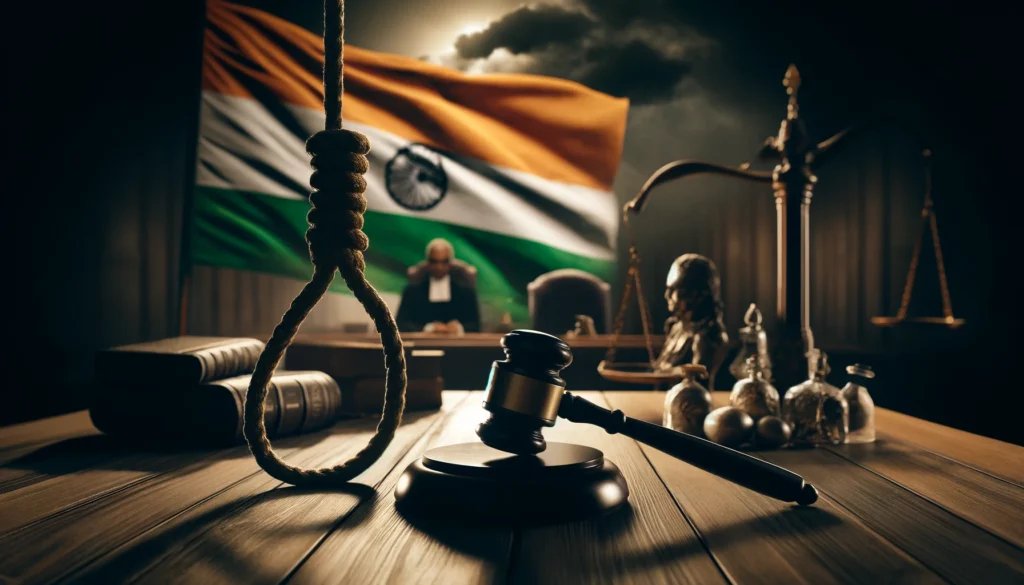Published On: November 9th 2025
Authored By: Tanushree Jaiswal
NMIMS, Navi Mumbai
Introduction
The judiciary in India enjoys a unique position as the guardian of the Constitution and arbiter of disputes between individuals and the state. Articles 124 to 147 of the Constitution create the Supreme Court, while Articles 214 to 231 establish the High Courts. From the earliest years of the Republic, the judiciary has asserted its power to review legislative and executive actions, most famously in Kesavananda Bharati v. State of Kerala (1973) 4 S.C.C. 225, which introduced the “basic structure” doctrine. Judicial independence lies at the heart of this constitutional design. Yet complete insulation from scrutiny can also give rise to secrecy and erode public faith in the courts.
Judicial accountability thus becomes essential. Accountability does not mean judicial subservience to political branches; it means transparent processes, ethical conduct, and mechanisms to address misconduct or inefficiency. The challenge for India is to balance these two imperatives, independence and transparency ,in a way that preserves the judiciary’s constitutional role while keeping it answerable to the people it serves.
Historical Context of Judicial Accountability in India
India’s judiciary evolved from the colonial courts set up under the British Raj. After independence, the framers of the Constitution consciously designed institutions to prevent the executive dominance that had characterized the colonial period. Article 50 directs the state to separate the judiciary from the executive, while Articles 124(4) and 217(1)(b) give judges security of tenure. Salaries and allowances are charged to the Consolidated Fund of India (Articles 125 and 221) to prevent financial pressure from the legislature or executive. These features collectively secure independence.
However, accountability was left largely to Parliament through the impeachment mechanism under Articles 124(4) and (5) and the Judges (Inquiry) Act, 1968. In practice, impeachment has proved difficult, politically charged, and rarely used ,Justice V. Ramaswami (1993) being a classic example. As a result, mechanisms for regular oversight or discipline were minimal.
Concept of Judicial Independence
Judicial independence refers to the ability of judges to decide cases impartially and free from undue influence. It encompasses independence from external actors (executive, legislature, and powerful private interests) and internal independence (freedom from hierarchical or peer pressures within the judiciary). Security of tenure, fixed service conditions, and judicial primacy in appointments and transfers all bolster this independence.
The Supreme Court elaborated this principle in Union of India v. Sankalchand Himatlal Sheth (1977) 4 S.C.C. 193, emphasizing that independence is a “cornerstone of democracy.” In the Second Judges Case, Supreme Court Advocates-on-Record Ass’n v. Union of India (1993) 4 S.C.C. 441, the Court held that judicial primacy in appointments was part of the basic structure of the Constitution. Yet, while independence is essential, it does not imply immunity from ethical standards or public scrutiny.
Importance of Judicial Accountability
Accountability ensures that judicial independence does not deteriorate into judicial impunity. It promotes public confidence, deters misconduct, and strengthens the legitimacy of judicial decisions. Without accountability, allegations of nepotism or opacity in judicial appointments undermine the very independence sought to be protected.
Current accountability mechanisms include impeachment, the in-house procedure for complaints, and the application of the Right to Information Act, 2005 to the administrative side of the judiciary. However, none of these mechanisms provides a comprehensive or fully transparent system of oversight. For instance, the in-house procedure remains confidential, and RTI compliance is uneven.
Balancing Independence and Transparency
The tension between independence and transparency is most visible in the system of judicial appointments. The collegium system created by the Second Judges Case and clarified in the Third Judges Case, In re Presidential Reference (1998) 7 S.C.C. 739, shifted control of appointments from the executive to the judiciary itself. While this secured independence from political interference, it introduced opacity. Critics argue that without publicly known criteria or reasons, the system undermines merit and diversity.
The Supreme Court itself has acknowledged this problem. In Supreme Court Advocates-on-Record Ass’n v. Union of India (2016) 5 S.C.C. 1, which struck down the 99th Constitutional Amendment and the National Judicial Appointments Commission (NJAC), the Court nevertheless invited suggestions to improve collegium transparency. Since then, collegium resolutions are published online, but disclosure remains partial.
Transparency has also advanced through RTI. In Central Public Information Officer, Supreme Court of India v. Subhash Chandra Agarwal (2020) 5 S.C.C. 481, the Court held that the office of the Chief Justice of India falls under RTI, affirming that judicial independence does not mean judicial secrecy. Another milestone is Swapnil Tripathi v. Supreme Court of India (2018) 10 S.C.C. 639, which endorsed live-streaming of court proceedings in matters of public importance.
Current Measures for Judicial Accountability
The most significant measure is the collegium system. It consists of the Chief Justice of India and the four senior-most Supreme Court judges (for Supreme Court appointments) or the Chief Justice of the High Court and two senior-most judges (for High Court appointments). Although collegium resolutions are now uploaded to the Supreme Court’s website, details of deliberations remain confidential.
Codes of conduct exist but are non-binding. The “Restatement of Values of Judicial Life” (1999) lays down 16 principles such as integrity, impartiality, and avoidance of impropriety. Internationally, the “Bangalore Principles of Judicial Conduct” (2002) reinforce similar values. Yet these are merely advisory and lack statutory force.
The in-house procedure adopted in 1999 allows internal inquiries against judges accused of misconduct. Parliament retains the impeachment power under the Judges (Inquiry) Act, 1968, but this is an all-or-nothing process that rarely succeeds. The RTI Act, 2005 has also been applied to the judiciary’s administrative functions, but exemptions and inconsistent compliance weaken its effect.
Challenges to Judicial Accountability
The first challenge is institutional resistance. The NJAC, which sought to replace the collegium with a commission including non-judicial members, was struck down for violating the basic structure doctrine. This shows the judiciary’s reluctance to accept external oversight.
The second challenge is political. Impeachment is a parliamentary process and thus subject to political calculations, as seen in the failed motion against Justice V. Ramaswami. The third challenge is structural. The absence of intermediate disciplinary measures means that judges accused of misconduct may continue in office if impeachment is politically unviable. Asset disclosures are voluntary, and contempt of court laws can chill legitimate criticism. Together these factors create a perception of opacity and immunity.
Comparative Perspective
Other common-law jurisdictions have developed mechanisms that reconcile independence with accountability. In the United Kingdom, the Judicial Appointments Commission publicly advertises vacancies and sets clear criteria for selection. The Judicial Conduct Investigations Office publishes annual reports of disciplinary actions.
In the United States, the Judicial Conduct and Disability Act (1980) creates a system of intermediate sanctions short of removal. The Code of Conduct for United States Judges is publicly accessible and enforced by judicial councils. Canada’s Judicial Council investigates complaints under the Judges Act and may recommend corrective measures or removal. South Africa’s Judicial Service Commission holds public interviews for judicial candidates and provides an example of openness in appointments.
These models show that independence need not mean secrecy and that transparent processes can enhance legitimacy.
Recommendations for Improvement
First, India could reintroduce a reformed National Judicial Appointments Commission that retains judicial majority but includes independent members such as eminent jurists or representatives of the Bar. Clear selection criteria and publicly stated reasons for appointments and transfers would enhance transparency.
Second, Parliament could enact a Judicial Standards and Accountability Act codifying ethical principles, mandating annual asset disclosures, and creating intermediate disciplinary measures. This would bridge the gap between the current non-binding codes of conduct and the extreme remedy of impeachment.
Third, the judiciary should embrace technology. Expanding the eCourts Mission Mode Project would improve public access to case data. Live streaming of significant constitutional cases, as already recommended in Swapnil Tripathi, would bring proceedings closer to the public and demystify judicial work. Secure online portals could allow citizens to submit complaints or feedback transparently.
Conclusion
Judicial independence and accountability are two sides of the same coin. Far from undermining each other, they reinforce the credibility and authority of the judiciary. Landmark judgments such as the Second Judges Case, Subhash Chandra Agarwal, and Swapnil Tripathi illustrate an evolving judiciary more open to public scrutiny. Yet much remains to be done.
Codifying judicial ethics, mandating asset disclosures, improving the in-house procedure, and introducing intermediate disciplinary mechanisms would all enhance public trust without eroding judicial independence. Drawing on comparative models, India can develop a system where judges remain free from external pressure but answerable for their conduct and decisions. Only then can the judiciary fully realize its constitutional promise as both impartial arbiter and accountable public institution.
References
- INDIA CONST. pmbl.; Kesavananda Bharati v. State of Kerala, (1973) 4 S.C.C. 225.
- INDIA CONST. arts. 124–147, 214–231.
- Union of India v. Sankalchand Himatlal Sheth, (1977) 4 S.C.C. 193.
- Judges (Inquiry) Act, No. 51 of 1968, India Code (1968).
- Supreme Court Advocates-on-Record Ass’n v. Union of India, (1993) 4 S.C.C. 441.
- In re Presidential Reference, (1998) 7 S.C.C. 739.
- Supreme Court Advocates-on-Record Ass’n v. Union of India, (2016) 5 S.C.C. 1.
- Cent. Pub. Info. Officer, Supreme Court of India v. Subhash Chandra Agarwal, (2020) 5 S.C.C. 481.
- Swapnil Tripathi v. Supreme Court of India, (2018) 10 S.C.C. 639.
- Supreme Court of India, Restatement of Values of Judicial Life (1999), https://main.sci.gov.in.
- Judicial Integrity Group, Bangalore Principles of Judicial Conduct (2002), https://www.unodc.org/pdf/crime/corruption/judicial_group/Bangalore_principles.pdf.
- Constitutional Reform Act 2005, c. 4 (U.K.); Judicial Conduct Investigations Office Annual Reports, https://judicialconduct.judiciary.uk.
- Judicial Conduct and Disability Act of 1980, 28 U.S.C. §§ 351–364 (U.S.); Code of Conduct for United States Judges (U.S. Courts 2023).
- Canadian Judicial Council, Judicial Conduct Process, https://cjc-ccm.ca/en/judicial-conduct.
- S. Afr. Const., 1996, § 178.
- Judicial Standards and Accountability Bill, Bill No. 38 of 2010, Parliament of India.
- eCourts Mission Mode Project, Phase III, National Informatics Centre, https://ecourts.gov.in.




